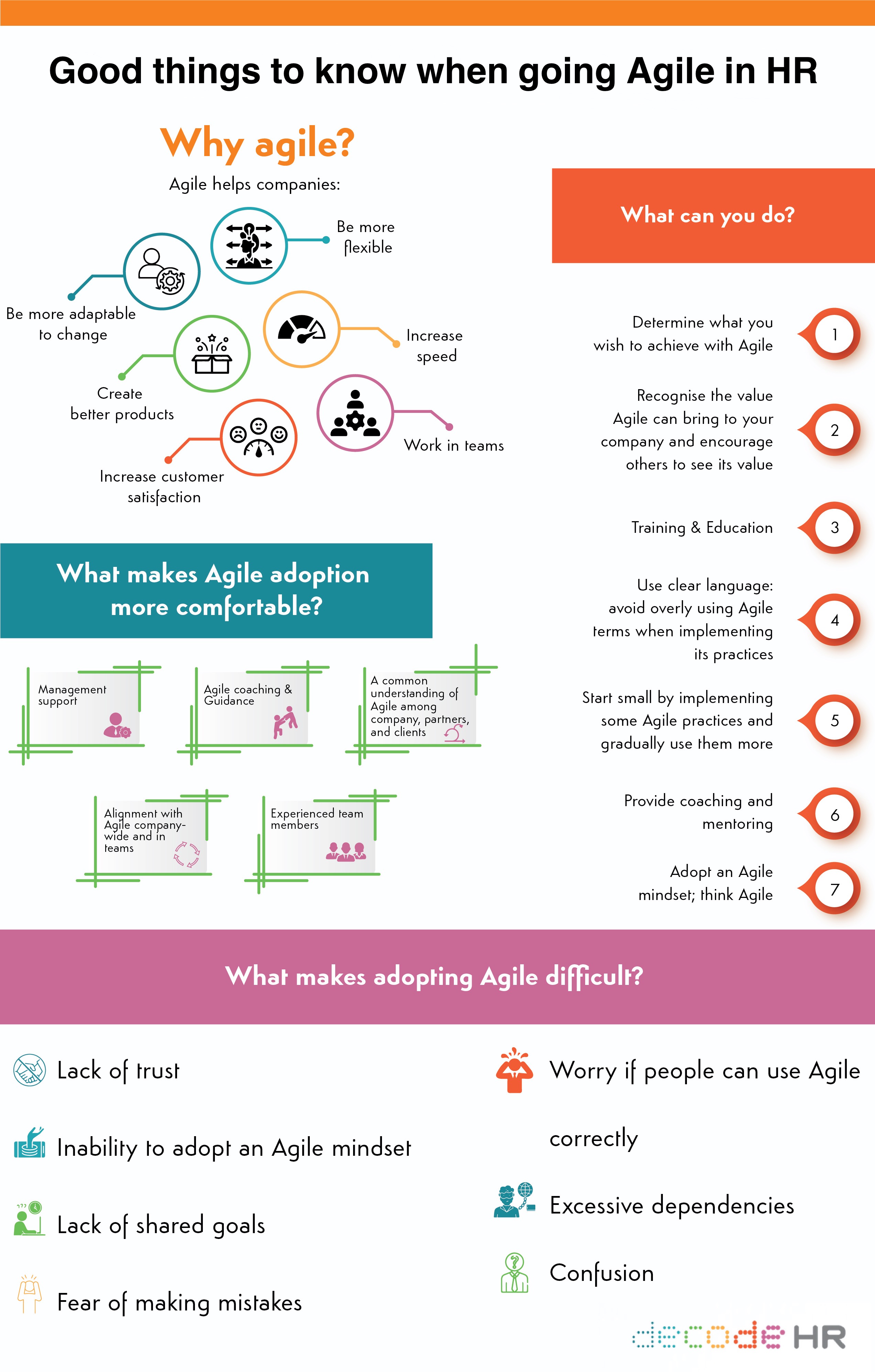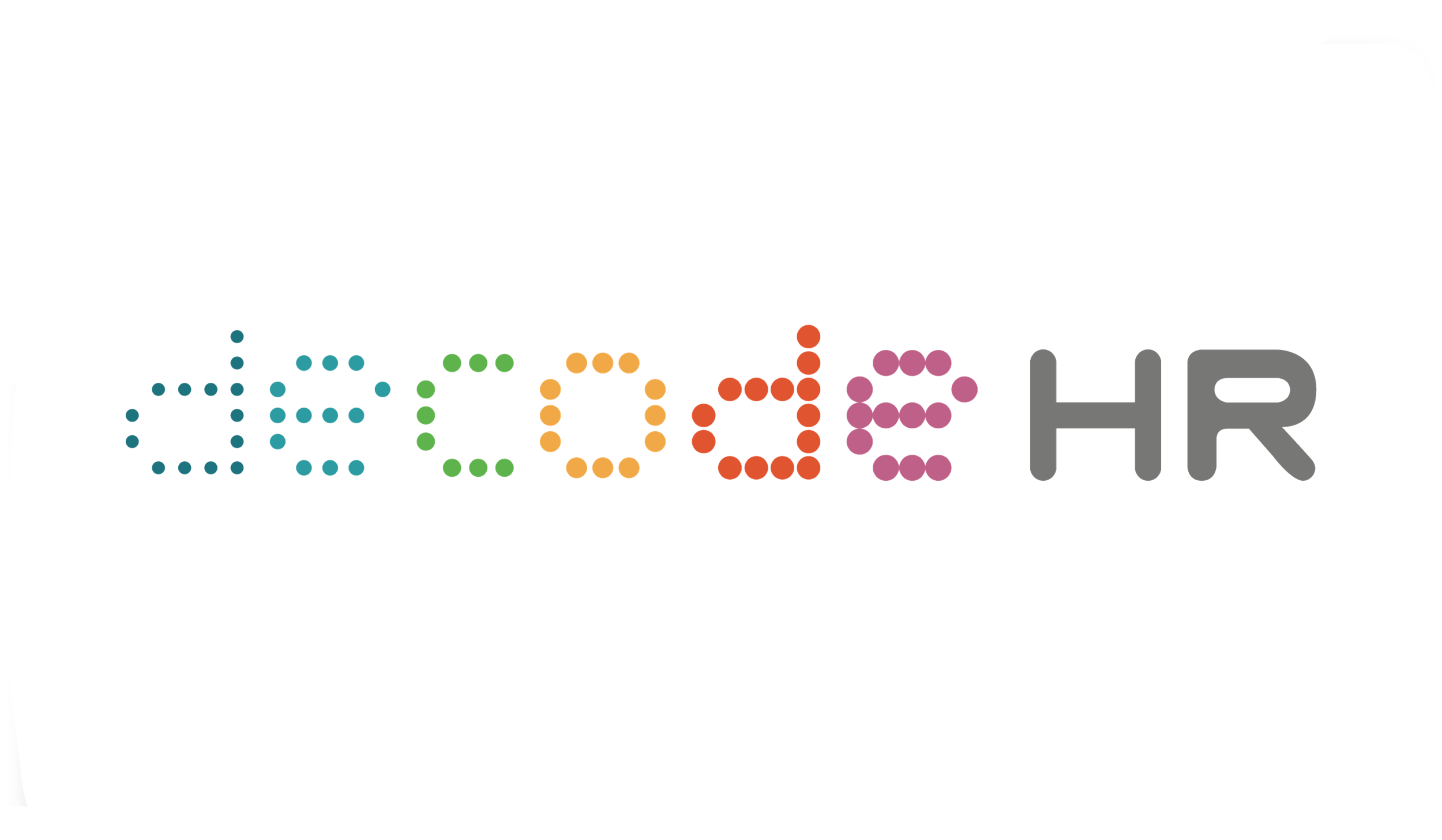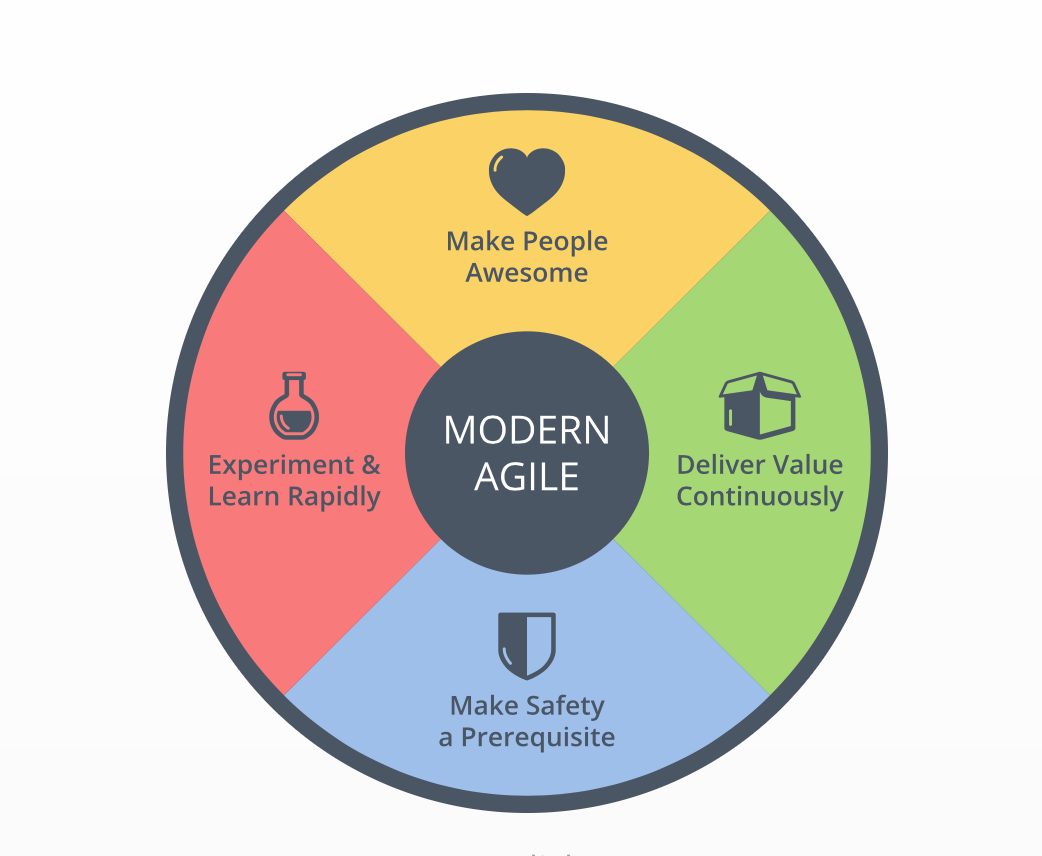Going Agile in HR: Key Transition Tips
Reading time: 3 mins
There’s agile - which means being flexible, like in yoga.
There’s Agile (with a capital A) - which refers to a way of working flexibly, first developed by software companies in the 70s.
And then there’s Agile HR - where Agile is brought into the HR space.
Today, with constant change, HR departments should be optimised to meet challenges by organising themselves in agile ways. But it takes knowledge, or people might end up going about the wrong way!
“It’s not just about being able to adopt technology. We are talking about the mindset and how that translates into our people processes,” said Evelyn Chow, DecodeHR Managing Director at our ‘Get Digital with Agile HR’ joint webinar with Organize Agile.
But what does an agile organisation look like?
STRUCTURE
It values diversified collaborative networks over hierarchical structures - small teams solve problems quickly by working together instead of waiting for instructions from the bosses.
Agile teams work in cycles called 'sprints' from one week up to one month, followed by an evaluation for feedback to start the next sprint. Rather than a prescribed one-year operations plan, this increases the team's adaptability.
Agile teams are self-managing, which gives people more autonomy over their work. In turn, teams take on more responsibility and figure out how they can improve their work.
COMMUNICATION
Communication is as efficient as possible so that the company can be flexible and respond to changes rapidly.
Transparency is valued over secrecy. This means honest two-way communication from top-down and down up. This builds trust, expands relationships, increases productivity, and strengthens innovation.
MOTIVATION
Setting objectives and goals collectively drives ownership, which is beneficial for engagement and ambition.
Intrinsic motivation is valued over extrinsic rewards. Independence, purpose, and mastery are, according to New York Times bestselling author Daniel Pink, essential in intrinsic motivation.
For organisations that want to go Agile, there are four Modern Agile guiding principles
Make People Awesome
Modern Agile has a human-centred approach when it comes to selling products, offering services, and management. We ask ourselves how we can bring value to our customers with our products or services, what do they expect from us? How can we give them an excellent experience? With all this in mind, we learn our customers’ context, pain points, and aspirations to meet their needs and expectations.
Make Safety a Prerequisite
Safety is essential in pretty much all aspects of life. It includes feeling safe and a safe working environment. The latter refers to people working with dangerous equipment or machinery. We also need to ensure that our products and services are safe to use. We can find safety in everyday life. Think, for example, about people who share their concerns and insecurities with you, trusting you will protect that information. So, we need to establish trust within a team to develop psychological safety. The bottom line is to make safety a prerequisite to increase performance and quality.
Source: Modern Agile
Experiment & Learn Rapidly
The best way to make people awesome and to make safety a prerequisite is by none other than learning! In daily life, we learn by experimenting in our surroundings and evaluate the outcomes. Whether we are aware of it or not, we continue to do things that work and discontinue doing things that don't work. This same principle applies to work. We learn from our failures by evaluating them and experiment with different actions. In addition to building trust and develop a psychologically safe environment, your team has to feel comfortable to experiment. It means that people embrace the idea of failing is okay as long as we use it as input for the next round.
Deliver Value Continuously
A core aspect of Agile is speed. As an Agile company, you should ask yourself "how do we deliver value in our work for our customers while increasing speed and flexibility?" You also want to scan the environment for the latest trends frequently and ask for feedback from your users. Doing that enables you to learn more about your users and stay ahead in the market.
If you are taking the first step towards Agile adoption, here’s a handy infographic that simplifies and gives you a bird’s eye view of this approach and the areas you should focus on to transition more smoothly.

Infographic by DecodeHR.
Share this infographic on your website
Copy the code in the box below and paste it into your page editor to embed it on your website.
<p><a href='www.decodehr.com/news-and-insights/going-agile-in-hr-key-transition-tips'><img src='https://static1.squarespace.com/static/5cfede4c6f0e8400015823cf/t/6128c425b0aca2030bcf53b2/1630061606608/good+things+to+know+when+going+Agile.JPG' alt='good things to know when going agile in hr' width='500' border='0' /></a><p>Infographic by <a href="https://www.decodehr.com/" target="_blank">DecodeHR</a>.</p>
This article is a part of our ‘Going Agile in HR’ series. Stay tuned for our next article.
Learn more about going Agile in HR:
Going Agile in HR: Competency Management
Going Agile in HR: Talent Acquisition
Agile HR & Total Rewards Strategy









